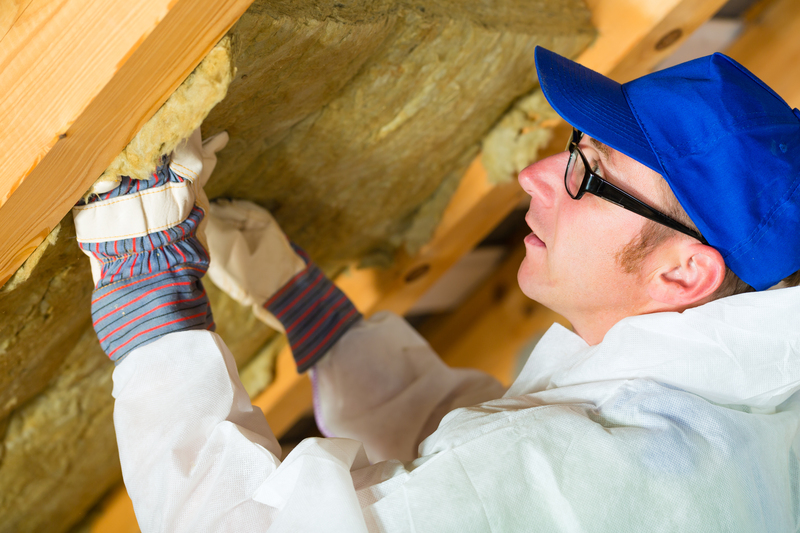Prioritizing Clean Air: Transformative Impacts on Homes and Workplaces
Posted on 20/06/2025
Prioritizing Clean Air: The Game Changer for Homes and Workplaces
Did you know that the air you breathe indoors can be up to five times more polluted than outdoor air? In today's fast-paced urban landscape, the topic of clean air has taken center stage, especially in homes and workplaces. As we spend approximately 90% of our lives indoors, prioritizing clean air is no longer a luxury--it's essential for health, productivity, and overall well-being.

Understanding Indoor Air Quality: What's at Stake?
Indoor air quality refers to the condition of the air within buildings and structures, particularly as it relates to the health and comfort of their occupants. Poor indoor air can have far-reaching consequences, ranging from minor irritations like allergies to serious health issues such as asthma, respiratory infections, and even long-term chronic diseases. The transformative impact of clean air is undeniable, touching every aspect of our daily routines at home and work.
Common Indoor Air Pollutants
- Particulate Matter (PM2.5 and PM10): Tiny particles from dust, smoke, and household activities
- Mold and Microorganisms: Fungi and bacteria thrive in humid environments
- Volatile Organic Compounds (VOCs): Emitted from paints, cleaning agents, and furniture
- Carbon Monoxide: Produced by incomplete combustion from stoves and heaters
- Pet Dander: Microscopic flecks of skin shed by animals
- Radon: A radioactive gas found in some building materials or soils
Health Benefits of Clean Air at Home and Work
Clean indoor air does not just prevent sickness--it actively promotes mental clarity, energy levels, and overall quality of life. Let's delve into the transformative impacts of improving air quality in the spaces we live and work.
1. Reduces Allergies, Asthma and Respiratory Issues
By eliminating dust mites, mold, and airborne pollutants, clean air helps control asthma symptoms and reduces allergic reactions. Prioritizing air purification in homes with children and the elderly is especially crucial, as these groups are more sensitive to air irritants.
2. Boosts Cognitive Performance and Productivity
Scientific studies reveal that improved indoor air quality leads to sharper focus, better decision-making, and enhanced productivity among employees. In workplaces, maintaining a clean-air environment can result in a significant reduction in absenteeism and errors.
3. Improves Sleep Quality
Exposure to airborne contaminants at night can disrupt sleep patterns and lead to restless nights. Ensuring clean air in bedrooms can lead to more restful, restorative sleep--critical for both adults and children.
4. Mitigates the Spread of Airborne Diseases
Airborne pathogens, such as the flu virus and coronaviruses, can circulate in enclosed spaces. Enhanced ventilation and air purification can significantly lower the risk of transmission in shared environments such as offices, schools, and homes.
Transformative Impacts in Homes: Making Every Breath Count
Transforming your home into a clean air sanctuary involves strategic and ongoing measures. Here are some impactful actions homeowners can take:
Adopt Air-Purifying Technologies
- HEPA Filters: Capture 99.97% of allergens and particles, transforming indoor air quality dramatically.
- UV-C Air Purifiers: Neutralize bacteria, viruses, and mold spores.
- Activated Carbon Filters: Absorb odors, VOCs, and chemicals from the air.
Ventilation is Key
Regularly opening windows, using exhaust fans in kitchens and bathrooms, and integrating energy-efficient ventilation systems are fundamental steps in maintaining clean air in homes.
Houseplants: Nature's Air Cleaners
Many houseplants are more than decorative--they naturally filter harmful substances like formaldehyde and benzene, providing a dual benefit of air purification and aesthetic appeal.
Mindful Use of Household Products
Opt for eco-friendly and fragrance-free cleaning agents, avoid aerosol sprays, and store chemicals in tightly sealed containers. This reduces the emission of VOCs and other toxic substances.
Clean Air in Workplaces: Unleashing Employee Potential
Smart organizations recognize that clean air in the office boosts not just the health but also the morale, engagement, and creativity of employees. Here's how businesses can prioritize air quality:
Upgrade HVAC Systems
- Regular Maintenance: Clean and update filters on a routine schedule.
- Advanced Filtration: Incorporate HEPA or MERV-13 filters for superior airborne contaminant removal.
- Smart Controls: Use sensors to detect and address air quality dips in real time.
A well-maintained HVAC setup ensures an uninterrupted supply of fresh and clean air throughout the workspace.
Implement Air Quality Monitoring
Invest in indoor air quality monitors that track pollutants, humidity, and carbon dioxide levels. Transparency with these metrics can reassure staff and prompt timely interventions.
Encourage Green Workspaces
Introducing plants, maximizing natural ventilation, and adopting toxin-free furniture or carpets are effective ways to foster a healthier work environment.
Promote Healthy Cleaning Practices
- Schedule cleaning during off-hours to minimize exposure to cleaning chemicals.
- Opt for natural or certified-green cleaning products.
The Economic and Social Advantages of Clean Air
Cost Savings Through Prevention
Companies investing in better air quality often see a reduction in healthcare costs and sick leaves. Homeowners benefit, too, through minimized doctor visits, increased property values, and lower maintenance costs due to less mold and mildew.
Enhanced Brand Reputation and Morale
Businesses prioritizing air quality are perceived as caring and forward-thinking, boosting their employer brand. Families who invest in clean indoor environments enjoy heightened peace of mind and stronger connections.
Community and Environmental Impact
Prioritizing indoor air quality can spark community-wide change. As more individuals and organizations adopt clean air practices, there's a cumulative reduction in both indoor and ambient pollution.
Simple Yet Powerful Steps for Cleaner Air
- Keep it dry: Use dehumidifiers and fix leaks promptly to halt mold.
- Maintain: CLEAN air filters, ducts, and vents often.
- Ban smoking: Remove tobacco use from all indoor spaces.
- Shoe-free zones: Limit entry of outdoor pollutants.
- Pet care: Groom pets regularly to reduce dander.
- Avoid idling vehicles: Don't warm up cars in attached garages.
- Test for radon: Particularly in ground-level or basement spaces.
Emerging Innovations in Clean Air Solutions
Technology is rapidly advancing our ability to manage and enhance indoor air quality. Some current trends include:
- Smart Air Purifiers: Devices that adjust settings automatically based on pollutant levels.
- IoT-Integrated Sensors: Provide real-time air quality data, integrating with building management systems.
- Next-gen Filters: Antimicrobial coatings and new filter materials that capture even smaller particulates.
- Green Building Certifications: Certifications like LEED, WELL, and Fitwel, incentivize organizations to adopt cleaner air practices.
Myths & Misconceptions About Clean Indoor Air
- "Outdoor air is always worse than indoor." - Not true! Many indoor spaces are more polluted due to inadequate ventilation and chemical buildup.
- "If you can't smell it, it's not there." - Many harmful pollutants are odorless (like carbon monoxide and radon).
- "All air purifiers work the same." - The effectiveness varies based on filter type, room size, and technology used.

The Future of Indoor Air Quality: A Call to Action
As awareness grows, more people are beginning to understand that clean air is fundamental--much like safe water or nutritious food. The push towards well-ventilated homes and health-optimized workplaces is already accelerating worldwide, driven by public health, sustainability, and productivity concerns.
Addressing the challenge means both individual responsibility and collective action. Homeowners, facility managers, employers, and policymakers all share a role in ensuring air quality takes priority. Every improvement--large or small--contributes to a more resilient, happy, and productive society.
Conclusion: Clean Air, Transformed Lives
Every breath counts. By prioritizing clean air at home and in the workplace, we protect our health, enhance our daily experiences, and create environments where people truly thrive. Investing in indoor air quality is one of the most immediate, impactful, and long-lasting decisions individuals and organizations can make.
Make the choice today to embrace the transformative power of clean, breathable air. Your home, your workplace, and your future self will thank you.






